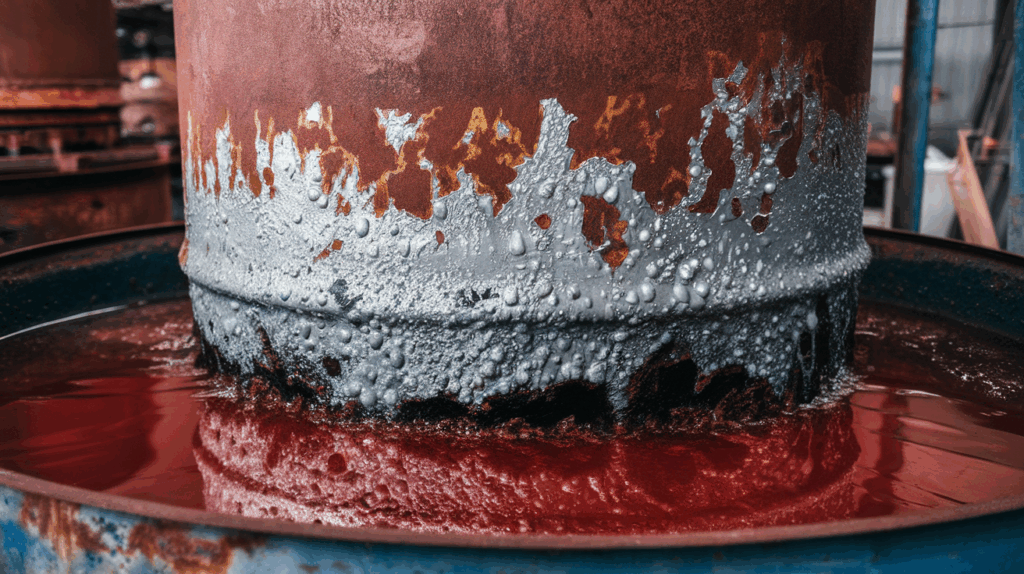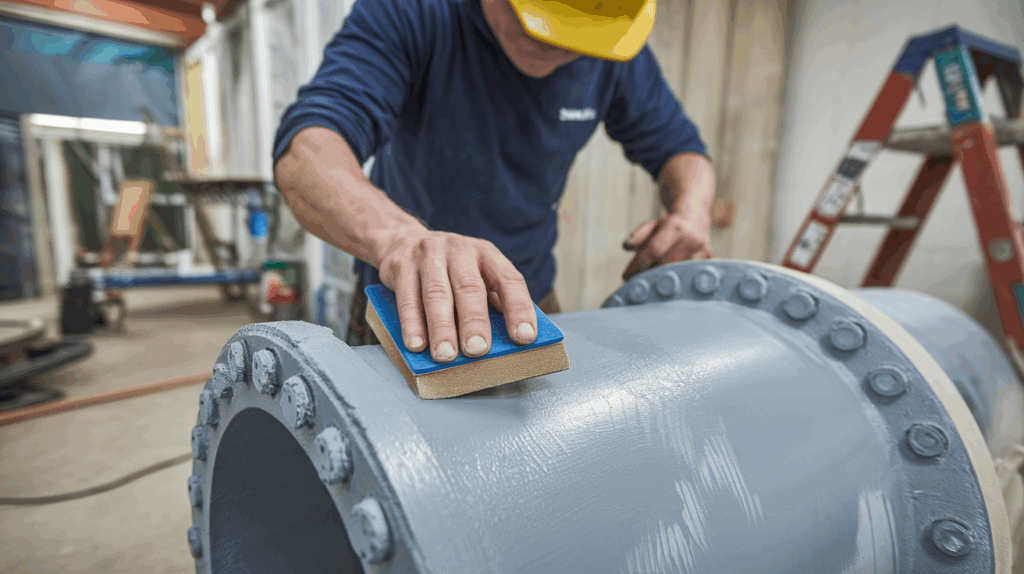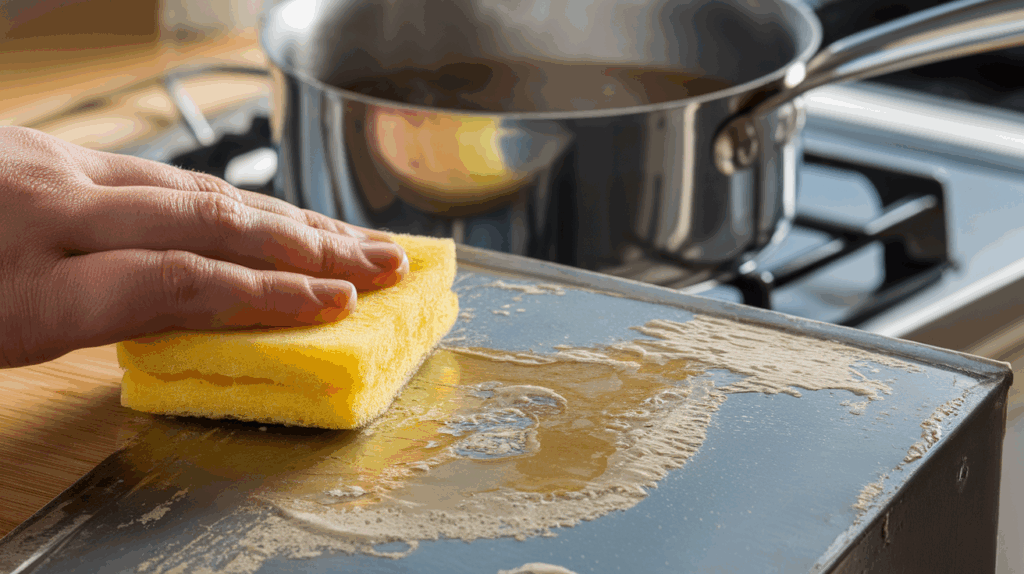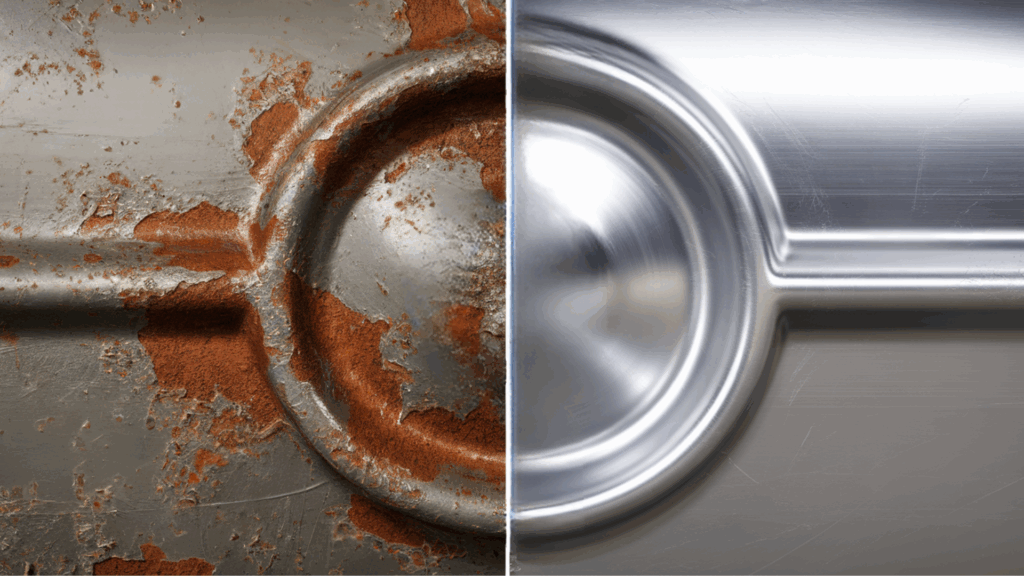It is not easy to remove paint from metal surfaces, but with the right method and tools, it can be done.
Dependingon the variablesinvolvedthatcanaffect the paintremovalmethod such as the type of metal the surface is made of, the age of the paint, and the type of paint, the method can vary.
Removing paint is an important step when you need a new paint coating or refurbish something.
Using the wrong technique can damage the metal and surface, leading to difficulties later in the task.
In this blog, I’ll go through methods and techniques that can be used to remove paint from metal, along with some tips to remove paint from metal successfully.
Why Remove Paint From Metal

Taking off metal is important due to many factors, like the paint chipping off, peeling, fading, and bubbling. One of the reasons can also be that layers of paint can be hiding rust and cracks underneath.
Adding fresh paint on old paint can result in more difficulties and make the new paint look even worse.
While restoring, refurbishing, and repurposing an item, it’s important to work on a clean surface first in order for paint to look fresh and new.
Sometimes older painted items may contain lead that can be harmful to children and pets. That’s why its recommended to take paint off metal.
Methods: How to Take Paint Off Metal
When removing paint from metal, there is no single approach. The approach depends on the type of metal and the method that comes off easy to you.
1. Chemical Paint Strippers

Chemical paint strippers are among the best options available to remove stubborn paint from metal. They work by breaking the bond between paint and metal, which allows the paint to be easily scraped off .
Chemical strippers are best for thick paint layers or multiple layers of paint. While working with chemical strippers, it is important to wear protective gear as chemical strippers are harmful and also work in a well-ventilated place.
Materials Needed:
- Chemical paint stripper
- Protective gloves and goggles
- Cloth or newspaper
- Paint scraper
- Wire brush
Step-by-step:
- Using an old brush, apply a thick, even coat of chemical paint stripper to the metal.
- Wait for 15-45 minutes. The paint will start to bubble or wrinkle. Now, scrape the paint off with the help of a paint scraper. Use a wire brush for stubborn spots.
- Repeat if needed. Now wipe down the metal with a clean rag soaked in water.
2. Heat Gun Technique

The heat gun method is a great and chemical-free way to remove paint from most metals, mainly thick layers or stubborn finishes.
The method works by providing high heat directly to the paint surface, and the heat breaks the bond between the metal surface and the paint.
As the temperature increases, paint expands and rises, which causes paint to bubble,blister, or wrinkle, and is ready to be scraped off with less effort and no chemicals.
Materials Needed:
- Heat gun
- Wire brush
- Safety goggles and a mask
- Drop cloth
- putty knife
Step-by-step:
- Clean the surface of any grease or flammable substances. Use a heat gun, set it to medium or less heat.
- Keep the heat gun a few inches above the painted surface,and move the heat gun back and forth.
- Paint begins to wrinkle or bubble, you can gently scrape it off with a putty knife.
- Move along in sections , repeating previous steps until paint is completely removed.
3. Sanding and Abrasive Tools

Sanding is also a chemical-free method of removing paint from metal. When sanding user is in complete control of how much paint is taken off, whether it’s a small or big project.
Manual sanding is typically the best option for smaller areas and projects of a more delicate nature.
Power sanding is recommended for larger projects and quickly finishes the job.
Materials Needed:
- Grit Sandpaper(Use grit type as per metals)
- Sanding block or sponge
- Orbital sander or Angle grinder
- Wire brush or steel wool
- Dropcloth
- Clean cloth
- Dust mask and goggles
Step-by-step:
- Sand using even motions in a circle or back and forth. Keep sanding until the majority of the paint is stripped
- Change to medium grit sandpaper to finish removing the paint prepare the surface
- Finish with 180-220 grit sandpaper to smooth any bumps or edges. Wipe off the dust with a clean, dry cloth or vacuum the dust off.
Tip: Be careful while sanding, as aggressive sanding can dent the surface.
4. Natural and DIY Solutions

If you’re looking for natural, non-toxic, and cost-effective methods to peel paint from metal, you can use vinegar and baking soda. They work best on small surfaces or a thin layer of paint.
Vinegar Method
The acidity in vinegar helps soften old paint and helps it be scraped off easily.
Materials Needed:
- Distilled vinegar
- Saucepan
- Cleanrag or sponge
- Paint scraper
- Gloves
Step-by-step:
- Heat vinegar in a saucepan until it’s hot but not boiling. Soak the rag in vinegar. Place the rag on the metal for about 15- 20 minutes.
- Remove the rag and gently scrape off the paint. Wipe the surface with water and let it dry.
Baking Soda
Boiling water mixed with baking soda causes paint to loosen on things like doors, tools, or hardware.
Materials Needed:
- Water
- Baking Soda
- Tong
- Wire Brush
- Gloves
Step-by-step:
- Add baking soda to hot water. Submerge the metal item in the solution. Boil for 15-30 minutes. Paint will begin to bubble and lift.
- Use tongs to remove the metal from the solution. Scrub the paint off with a brush or a pad.
- Rinse and dry the item completely.
Tips for Successfully Taking Off Paint From Metal
I’ve learned that avoiding common mistakes is just as important as the technique itself. If you’re not careful, you can damage the metal, create a mess, or even hurt yourself.
1. Test on a small area: Testing on a small area will ensure you don’t damage the metal, and you’ll also know how well the paint removes
2. Protect yourself: Removing paint can be dangerous in any case, like chemical, heat, or power tools . One should always wear gloves, safety goggles, and a dust mask.
3. Blend removal techniques: Not always can a single method work. Sometimes you can blend more than one technique to achieve a flat and smooth finish.
4. What to do after removing paint: After removing paint, it is important to ensure that the metal is wiped, the surface is clean, and inspected for rust. One should always use rust inhibitor or primer right away, as bare metal is easier to soaks up moisture faster.
5. Work with the weather: It’s best to choose a dry day with mild temperatures. Humid or cold conditions can slow the process due to moisture. Good weather helps the technique work better.
Conclusion
Restoring old tools, furniture, or fixtures by removing paint from metal can bring new life to items you thought were too far gone.
I’ve found that the best results come from choosing the right method for both the type of metal and how much paint needs to be removed.
There are several ways to strip paint, including chemical paint removers, heat guns, sanding, or even natural DIY options like vinegar or baking soda. Sometimes, I use a mix of methods to get the job done more effectively.
Once the paint is off, it’s important to clean the surface, check for rust, and seal or prime the metal if needed. Taking your time with each step leads to a better final result.
Ready to bring your metal pieces back to life? Grab your tools, and let’s get started on the restoration journey.

